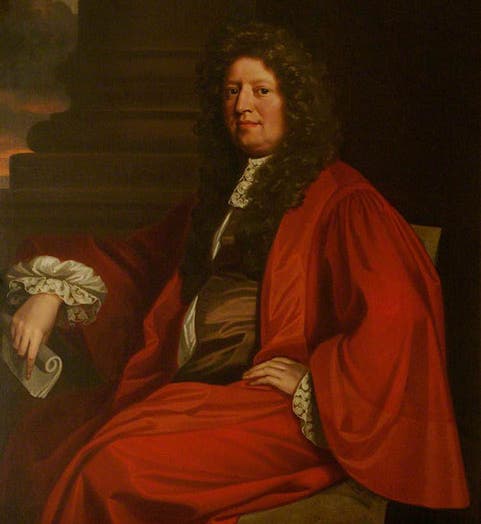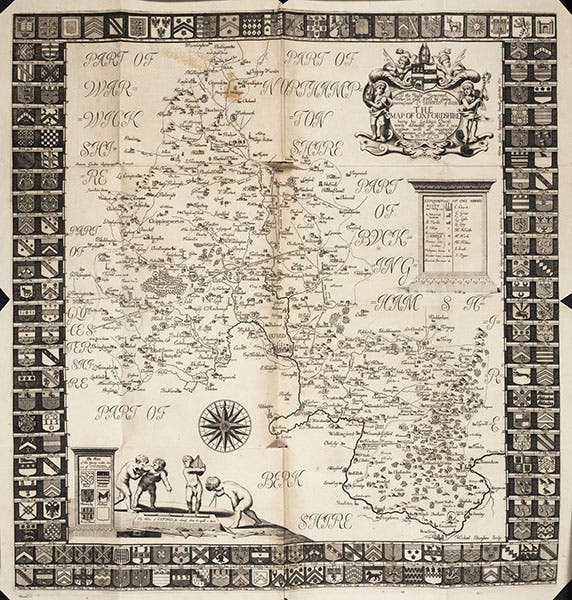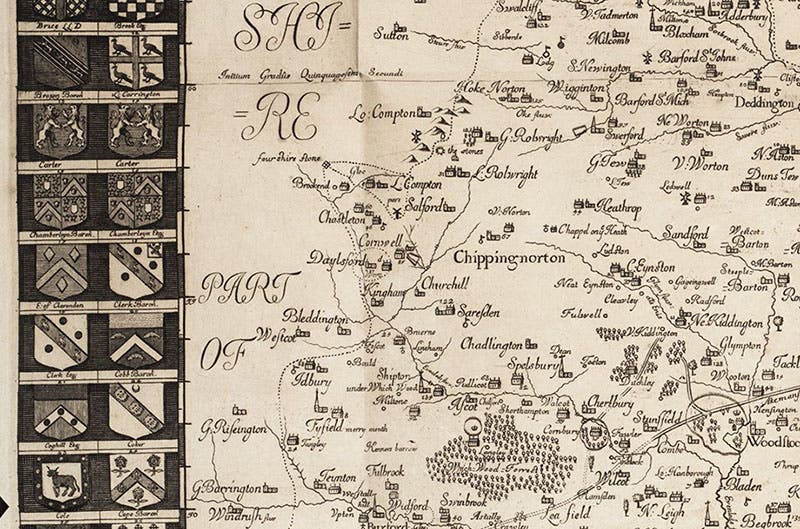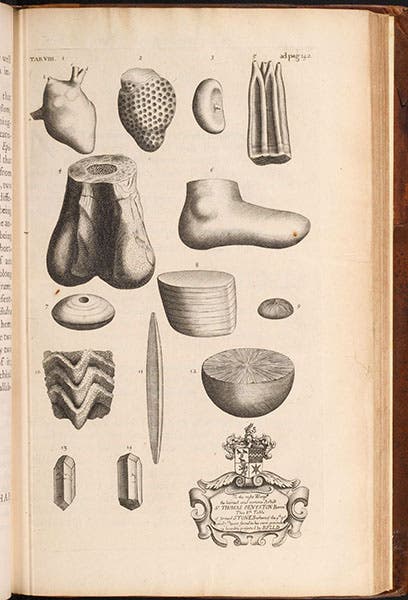Scientist of the Day - Robert Plot
Robert Plot, an English naturalist and antiquarian, was born Dec. 13, 1640, in Kent. Plot attended and taught at Magdalen Hall at Oxford, and like many of his contemporaries (such as Robert Hooke and John Aubrey), he roamed the countryside collecting natural objects and antiquities and sketching the landscape. In 1676, he published a book that would establish a new and popular genre in England: the county natural history. Plot's work was called The Natural History of Oxford-shire, and he would follow that up ten years later with The Natural History of Stafford-shire (1686).
Chorography, or regional history, was a full-century old when Plot compiled his natural history of Oxford, but earlier chorographies were concerned mostly with lineages of the prominent gentry – they were really exercises in genealogy. Plot loved his gentry as much as the next man seeking patronage, but he was not interested in where they came from, he wanted to know what they owned, what their houses looked like, what kind of animals roamed their fields, what plants filled their gardens, and what manner of Roman coins and Saxon urns one could find on their property. He was doing what his contemporaries called "Baconian natural history," because Francis Bacon had recommended that we compile histories of: the natural productions of an area (natural history), the instances where nature has gone astray, as with two-headed chickens and oak burls (preternatural history); and the artificial productions done in imitation of nature (the arts). Plot did exactly that, and he did it better than anyone, if we are to judge by the way occupants of other English shires immediately hastened to compile histories of their own counties.
We own both of Plot's natural histories at the Library, but as only Oxford-shire has been scanned, we wll focus on that work in this post. The book begins with a map, compiled and drawn by Plot himself during his years of travels through the shire. We show here the entire map (third image), as well as a detail of the northwest corner of the map, since it contains the sites relevant to the discussion that follows (fourth image). Plot claimed, correctly, that this was the most detailed map of any county of England ever drawn. Plot discussed minerals and fossils first, then plants, then animals, but it is clear that his interest lay with the fossils, and he devoted much more space to them than to flora and fauna. He included a plate showing ammonites, the fossils that had also fascinated Robert Hooke (fifth image). Hooke thought that ammonites were the remains of formerly living organisms, but Plot was not so sure, thinking it more likely that they were figured stones of inorganic origin.
One of the fossils illustrated by Plot on another plate has become somewhat famous, at least in certain circles. You can find it on plate 8 (sixth image, below), which contains a variety of fossils or mineral accretions, all with a resemblance to some part of the human body. Figure 4, just above center left, is described as the lower part of a giant thigh bone, some 24" in circumference. It was found in the parish of Cornwell, which is just to the left of Chipping Norton in our map detail (fourth image). After considering several possibilities, such as that it might be the femur of an elephant brought to Britain by the Romans, Plot decided it must have been the thigh bone of some giant antediluvian patriarch from the Methuselah days of the world. As it happens, the bone (which no longer survives) was almost certainly the lower end of the femur of a theropod dinosaur, most probably that of a Megalosaurus, making it the first theropod dinosaur bone ever pictured. Because he did not recognize the fossil as an extinct reptile (and how could he have, in 1676), Megalosaurus had to be rediscovered by William Buckland in the early 19th century (see the first item in our online exhibition, Paper Dinosaurs, or this post on Buckland).
In the latter half of the Natural History of Oxford-shire, Plot discussed man-made objects that had become, in a sense, part of the landscape. We show here an engraved plate (seventh image) that depicts the water works at Enston (now Enstone, but spelled Eynston on the map detail, just east of Chipping Norton, fourth image). This was built by Thomas Bushell before the English Civil War, after he found a natural rock formation that seemed to cry out for a fountain. The waterworks fell into disrepair during the Interregnum, but in the 1670s, it was rebuilt by Edward Henry Lee, the first Earl of Lichfield, to whom this plate was dedicated. In another plate, Plot showed the underground grotto that was built to accompany the fountain (eighth image). Grottoes were to be quite the feature of English gardens in the 18th century (see for example our post on William Borlase); perhaps Plot’s engraving sparked that interest.
So impressive was Plot’s Natural History of Oxford-shire that immediately after its publication, he was invited to become a fellow of the Royal Society of London. And when Elias Ashmole opened his new museum at Oxford in 1683, he hired Plot to curate the collection, and so Plot became the first Keeper of the Ashmolean Museum. In the same year, he was appointed the first Professor of Chemistry at Oxford, which made him, I suppose, the world’s first professional biochemist. He held his two jobs for 7 years and then quit and retired. He had intended to write many more country histories – Kent, his county of birth, was next on the list – but that was not to be. Plot suffered from kidney stones, and died on Apr. 30, 1696, at age 55. He was buried in Borden, Kent, where he had retired; if there is a memorial stone, I could not find it.
William B. Ashworth, Jr., Consultant for the History of Science, Linda Hall Library and Associate Professor emeritus, Department of History, University of Missouri-Kansas City. Comments or corrections are welcome; please direct to ashworthw@umkc.edu.














